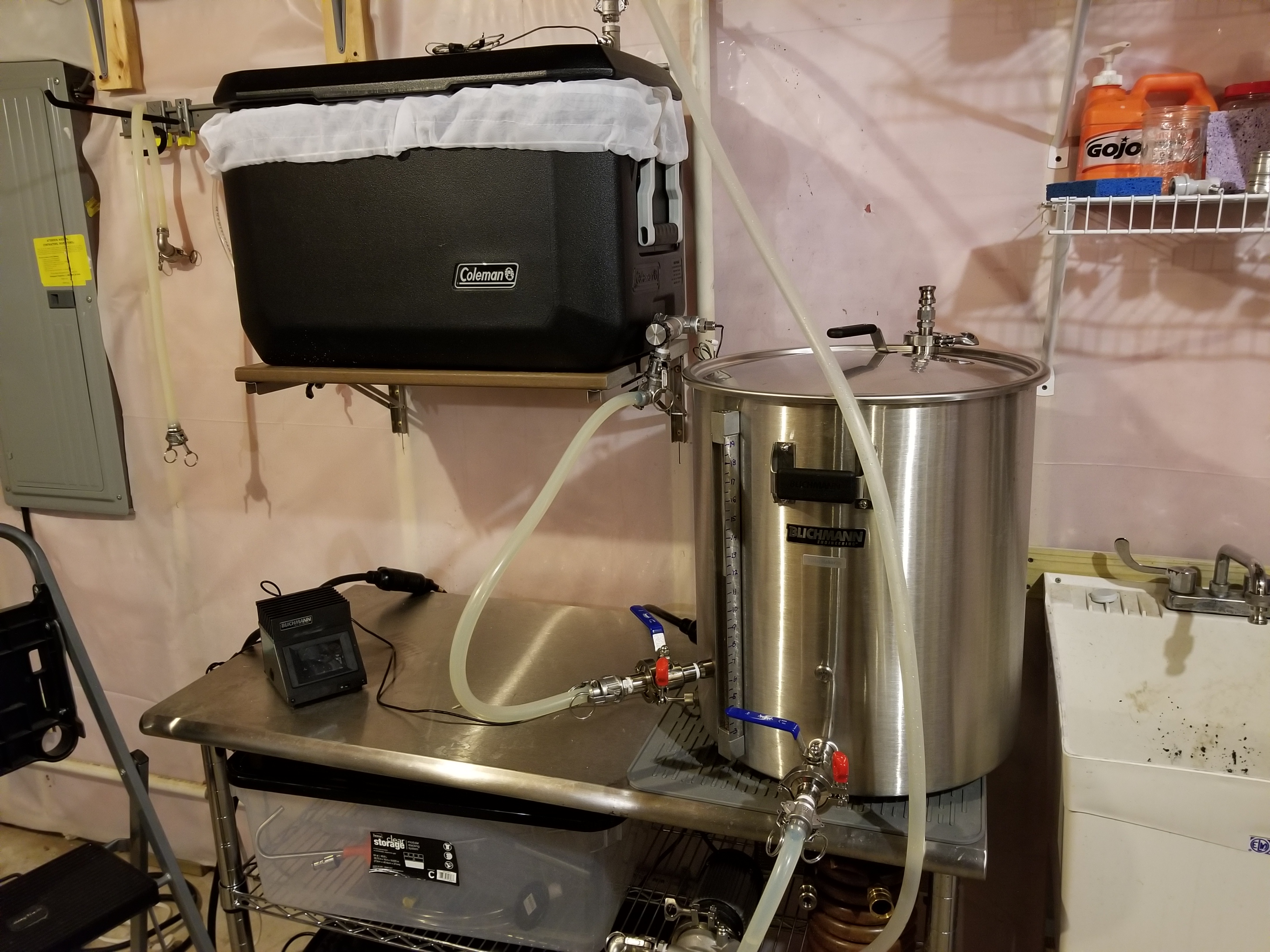Thanks for the replies. The reasons for my upgrades are:
1. Have a recirculating mash for clearer wort.
2. Moving large amounts of liquids without busting my back.
3. Chilling by recirculating in a closed environment.
I know the process of brewing on my set up. I know the terms. I have fermentation temp control. I put my carboy in the fridge with a temp controller. I am not interested in biab.
I was just curious about how the mash works in a two vessel system. I saw a demo of the wort hog two vessel system. I can’t figure out how he sparged. Maybe a sparge isn’t needed? I don’t know. Also, he mentioned his two pump system set up in an infinity loop. Huh? Then, he kept switching on and off heating elements. Just curious how this system works.
Also, how does chilling after the boil work in a two vessel system? He recirculated the wort after the boil and chilled. How? He doesn’t really explain. Also curious about electric brewing. Would I need to have special outlet installed?
I know brewing. I know the terms. Well, mostly. Not familiar with herms, rims, and infinity loops. Some responses from some of you were to learn the terms first. That’s why I’m here. Can someone help me out with how this two vessel system works. Or, where I can learn about it?
The mash on a 2 vessel system is quite simple, and has some similarities with BIAB that are nice. Namely, you start with the full volume of water all at once. Instead of your mash being in a bag within the kettle... your mash is simply in a 2nd vessel, and the full volume of water is circulated between the 2 vessels. You also get some herms/rims benefits... insofar as your boil kettle is always involved, and in an electric system, you can use the boil kettle to hold (perfectly) or adjust temps.
I'm sure different people vary... but here's my process. I have an elevated mash tun, so only use one pump:
Heat all the water in BK.
Add grain to mash tun.
Transfer part of (strike) water to mash tun using pump. (I actually fill from the bottom, as many do.) About 60% of the water ends up in the mash tun (just based on my capacities), and 40% remains in the BK.
I recirculate within the mash tun only for about 10 minutes... equivalent to a vorlauf, and sets the grain bed.
Then, reconfigure the hoses to recirculate in a loop between both vessels. Mash tun drains to BK at same rate as I pump from BK to MT.
My mash is 60 mins
The "sparge" in this process is simply heating all of the water while recirculating (using the BK) until is equilibrates at 170 in both vessels, then let it recirculate at that temp for about 15 minutes.
I like the 2 vessel... because it has some of the simplicities of BIAB, but due to recirculation (and setting a grain bed in a separate vessel) you get the benefits of the clearer wort that you get from a vorlauf. Also, instead of hanging/handling a heavy (and hot) bag... I think it is easier to deal with the spent grain in a cooler.
Other people, of course, think it is just overcomplicating BIAB... and traditionalists say 3 vessel is the only way to go.
So YMMV. I went with a 2 vessel because I liked the idea... and it is easily convertible either way. I can do BIAB if I'd like, or can add by (old) BK as an HLT... and do 3 vessel. (Just haven't tried that yet.)
As for a bit more info on it: Research "Brutus 20"... you probably have already found that. The Blichmann Breweasy is actually the same idea... just in a different (and expensive) configuration. I prefer the simplicity of gravity plus 1 pump.
Here's the "Brutus 20" article and an HBT post...
http://www.alenuts.com/Alenuts/brutus20.html
https://www.homebrewtalk.com/forum/threads/countertop-brutus-20.131411/
Here's a good article on "Breweasy Brewday Tips" that discusses some of the concepts in practice. (Note: I haven't messed with PH yet... and my beer has been great... but I'll get around to it eventually.)
https://www.greatfermentations.com/brew-day-tips-blichmann-breweasy/
Here's a pic of my gravity 2 vessel system. Pardon the, um, spartan look of the utility area in which it is contained:
Finally... if you want large batches (for electric), you'd need to go with a 240v circuit... and that will be a significant upgrade cost. (Unless you know an electrician who will cut you a break.) If you're sticking with 5 gal batches, you can get by with 120v on a 20amp circuit. (Get a Blichmann boilcoil setup if you'd go 120v... highest power rating at 120v. I had one before going to 240v, and it was quite good.)






















































![Craft A Brew - Safale S-04 Dry Yeast - Fermentis - English Ale Dry Yeast - For English and American Ales and Hard Apple Ciders - Ingredients for Home Brewing - Beer Making Supplies - [1 Pack]](https://m.media-amazon.com/images/I/41fVGNh6JfL._SL500_.jpg)


